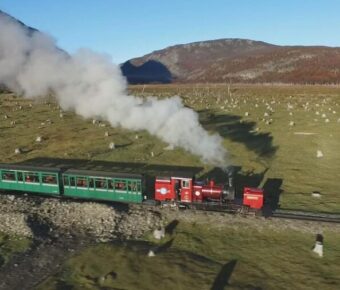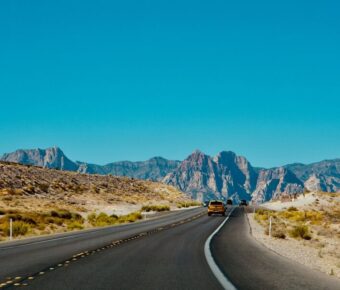
Breckenridge vs Loveland: Which Colorado Mountain Paradise Offers Better Skiing in 2025?
Planning a ski trip to Colorado? Breckenridge and Loveland are two resorts that are often compared. While both offer great skiing experiences, they cater to different types of winter enthusiasts.
Loveland is generally a better choice for first-time skiers. It offers cheaper rates, less crowded slopes, and a dedicated beginner area.
The mountain provides excellent terrain without the resort-town atmosphere of Breckenridge. Many locals prefer Loveland for its authentic skiing experience, though it can get cold and windy.
Breckenridge, one of Summit County’s five nearby ski areas, offers a more complete resort experience. With a charming town and extensive amenities, Breck attracts visitors looking for on-mountain action and après-ski activities. The trade-off is bigger crowds and higher prices than at more laid-back Loveland.
Table of Contents
- Location and Accessibility
- Proximity to Denver
- Ease of Access via I-70
- Transportation Options
- Terrain and Trail Options
- Variety of Trails
- Backcountry Opportunities
- Beginner-Friendly Areas
- Ski Resort Amenities
- On-Site Lodging
- Dining Experiences
- Apres-Ski and Nightlife
- Lift Systems and Queue Times
- Lift Ticket Options
- Lift Queue Management
- Season Pass Deals
- Snow Quality and Weather Conditions
- Average Snowfall
- Peak Snow Months
- Microclimates at Each Resort
- Local Attractions and Activities
- Nearby Towns and Shopping
- Cultural and Outdoor Events
- Non-Skiing Adventures
- Comparison of Costs
- Lift Tickets and Ski Passes
- Accommodation Pricing
- Rental Equipment Rates
- Reviews and Testimonials
- Professional Ratings
- Visitor Experiences
- Family-Friendliness
- Expert Skier Opinions
- Environmental Responsibility
- Sustainable Practices
- Eco-Friendly Initiatives
- Community Involvement
- Frequently Asked Questions
- What are the advantages of choosing Breckenridge over Loveland for skiing?
- How does Loveland’s ski experience compare to that of Breckenridge in terms of snow quality and terrain?
- Are any distinct features that set Loveland Ski Area apart from Breckenridge for winter sports enthusiasts?
- Can you highlight the differences in the family-friendly amenities that Breckenridge and Loveland Ski Area offer?
- Regarding accessibility and travel convenience, how do Breckenridge and Loveland compare for a ski vacation?
- What are the cost differences for a day on the slopes at Breckenridge versus Loveland, including lift tickets and rentals?
- Book Your Dream Experience
- More Travel Guides
Location and Accessibility
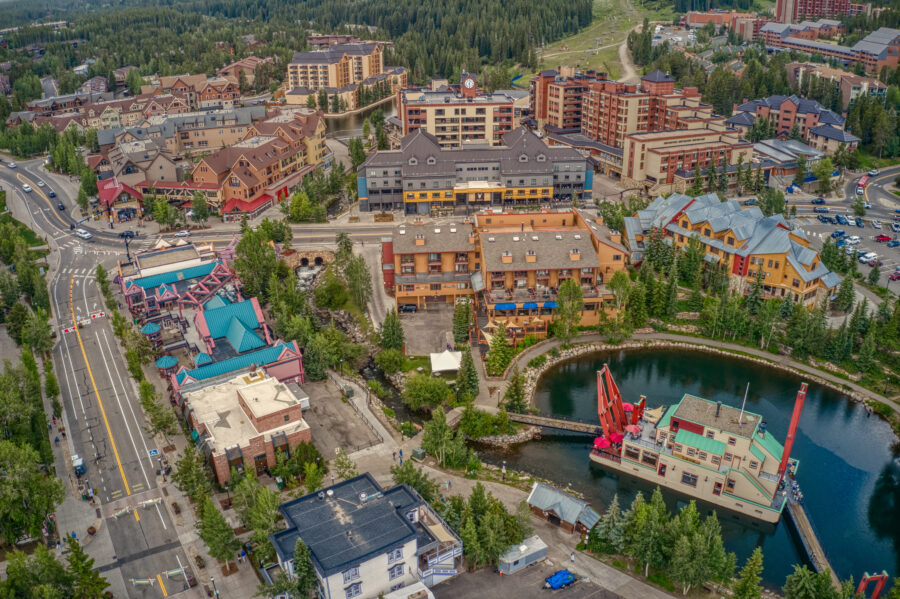
Both Loveland and Breckenridge offer unique locations in Colorado’s mountains, but they differ significantly in how easy they are to reach and navigate. Your travel time, transportation options, and overall convenience will vary depending on your chosen resort.
Proximity to Denver
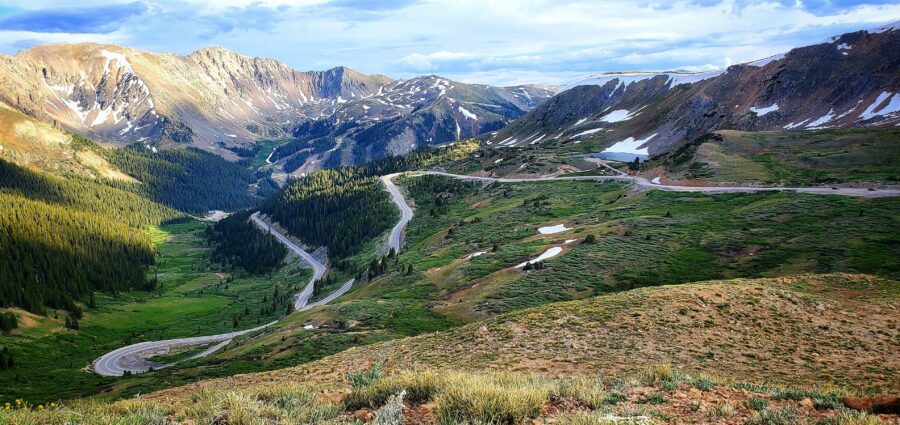
Loveland Ski Area sits much closer to Denver than Breckenridge, making it a popular day-tripper choice. It’s only about 53 miles west of Denver, which typically means a drive of just over an hour in good conditions. This proximity is a huge advantage for visitors staying in the city or locals wanting to maximize their time on the slopes.
On the other hand, Breckenridge requires a longer journey, roughly 80 miles from Denver. This means a 1.5—to 2-hour drive without traffic or weather delays.
The extra distance can be significant, especially during heavy snow or peak travel times when I-70 gets congested. Loveland’s location is a clear advantage for travelers with limited time or those hoping to squeeze in more skiing with less driving.
Ease of Access via I-70
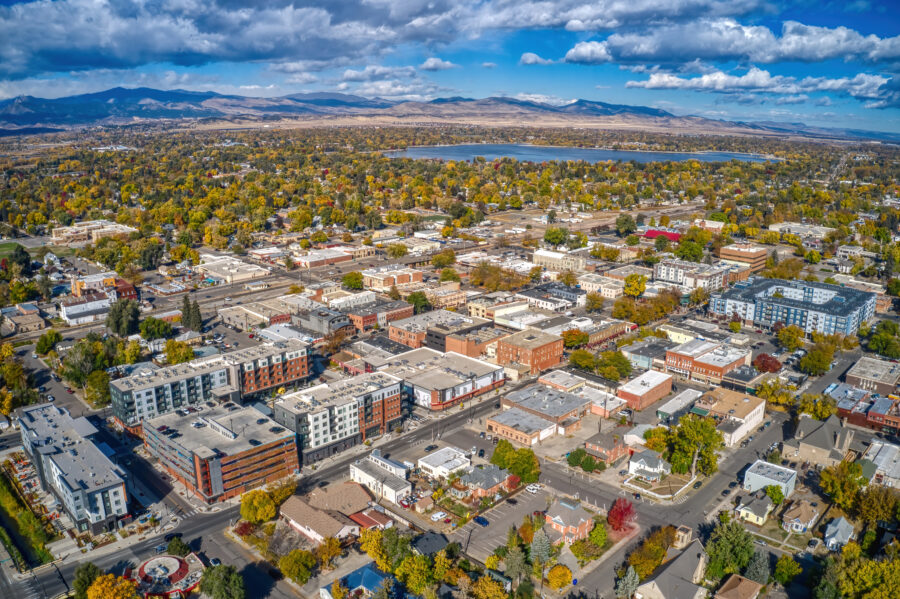
Both resorts are accessible via I-70, but in very different ways. Loveland sits right off I-70 at Exit 216, making reaching incredibly straightforward. There’s no need to navigate town roads or mountain passes to get to the base area – you can practically see the lifts from the highway!
Breckenridge requires drivers to exit I-70 at Frisco (Exit 203) and then travel south on Highway 9 for about 10 miles. This adds distance and time, especially during snowstorms when Highway 9 can become slippery and slow-going.
One important consideration: Loveland straddles the Continental Divide and sits near Loveland Pass (11,990 feet). This high-elevation position can mean more extreme weather and occasional road closures that affect access.
Transportation Options
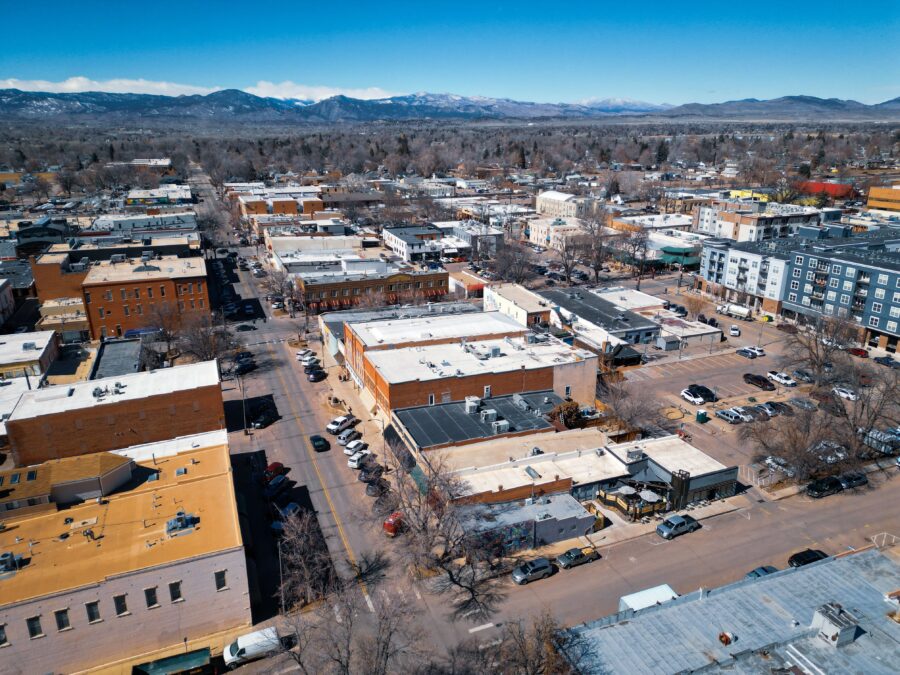
Breckenridge offers more robust transportation options for visitors without cars. The resort town has a free shuttle system that connects lodging areas with the gondola and base areas. There’s also bus service from Denver via the Summit Stage and Bustang routes.
Loveland has fewer public transportation choices. Some shuttle services from Denver are not as frequent or well-established as those in Breckenridge.
The mountain operates a free shuttle between its Valley and Basin areas, connecting only different resort parts. For international travelers flying into Denver International Airport, Breckenridge offers more shuttle services and transportation packages, though they are more expensive due to their greater distance from Denver.
Terrain and Trail Options
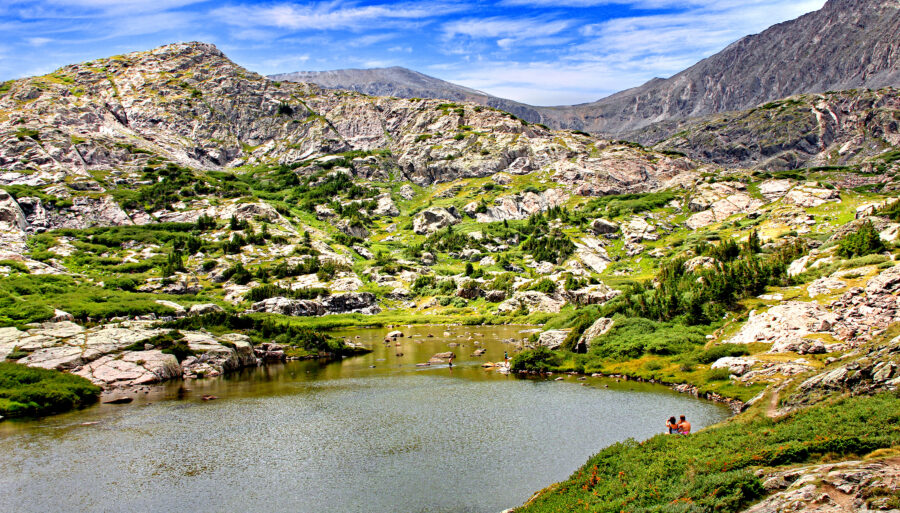
Both Breckenridge and Loveland offer unique skiing experiences with distinct terrain features. The mountains have different personalities regarding trails, backcountry access, and areas for beginners.
Variety of Trails
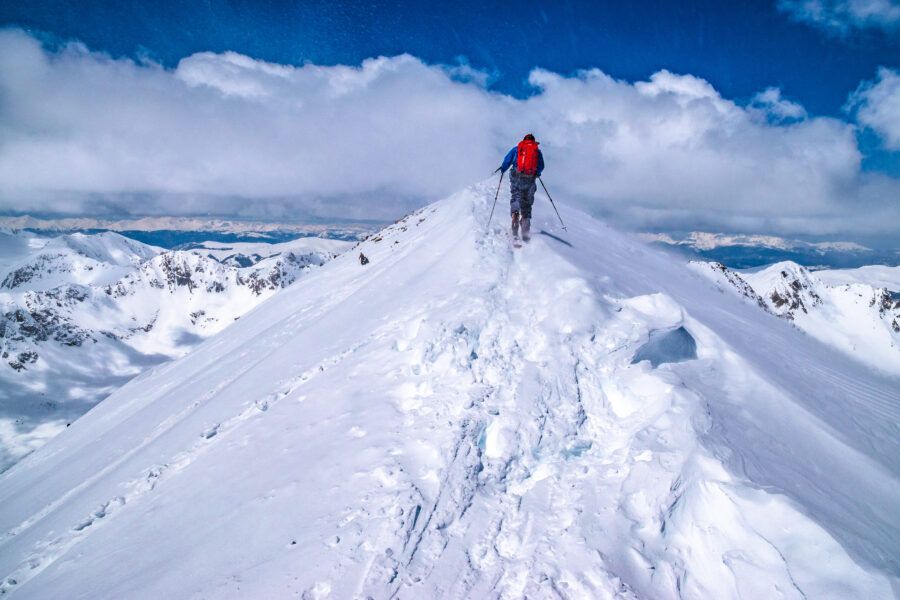
Breckenridge boasts an impressive 2,908 acres of skiable terrain spread across five peaks. This creates a diverse playground with 187 trails catering to all skill levels. The resort is known for its well-groomed runs and excellent high-alpine terrain.
Breck’s Peak 6, 7, and 8 offer fantastic above-treeline skiing with breathtaking views. The Imperial Express SuperChair takes skiers to 12,840 feet – the highest chairlift in North America!
Loveland offers a different experience with 1,800 acres split between Loveland Basin and Loveland Valley. The terrain is more varied and less manicured than Breckenridge, giving it a more rugged feel that advanced skiers often appreciate.
The mountain features several ridge runs that provide amazing panoramic views. Many locals love Loveland for its no-frills approach to skiing and less crowded trails.
Backcountry Opportunities
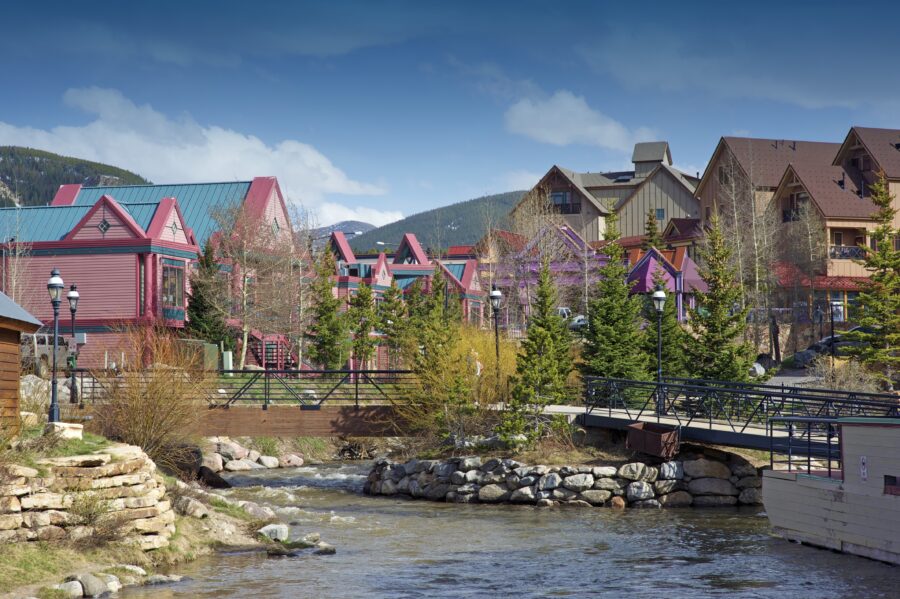
Breckenridge provides access to excellent backcountry terrain, particularly along the mountain’s backside. The resort’s gates offer entry points to challenging out-of-bounds areas for experienced skiers and riders.
Hiking from the top of the Imperial Express opens up even more adventurous terrain. Proper avalanche gear and knowledge are essential when venturing beyond resort boundaries.
Loveland truly shines when it comes to backcountry access. The Ridge at Loveland offers some of Colorado’s best lift-accessed backcountry-style terrain with minimal hiking required.
The north-facing slopes hold snow exceptionally well throughout the season. Many experienced locals choose Loveland specifically for these less crowded powder opportunities and challenging natural features.
Beginner-Friendly Areas
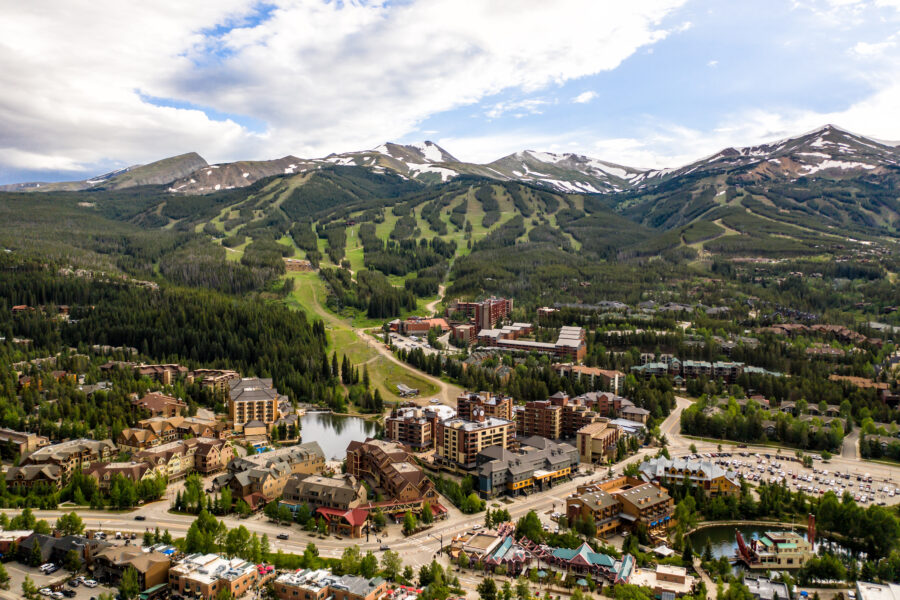
Breckenridge excels at catering to beginners, with dedicated learning areas on Peak 8 and Peak 9. The resort offers gentle, wide-open green runs that are perfect for beginners.
The ski school at Breck is highly regarded, with patient instructors and progressive teaching terrain. Beginners can enjoy spectacular views without tackling difficult runs, making it an attractive option for mixed-ability groups.
Loveland Valley is completely separate from the main mountain (Loveland Basin) and is exclusively dedicated to beginners. This creates a comfortable learning environment away from the intimidation of more advanced skiers zooming by.
As the search results mention, Loveland has “a nice separated beginner area in the valley.” This separation allows new skiers to build confidence at their own pace before graduating to more challenging terrain at the main area.
See Related: Breckenridge vs Vail: Key Differences to Know Before Booking Your Colorado Ski Vacation
Ski Resort Amenities
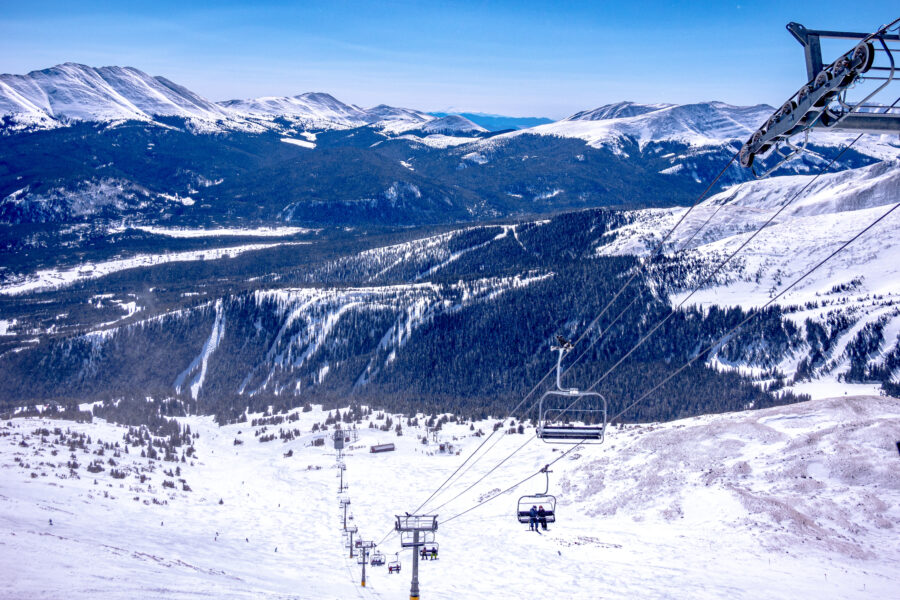
Both Breckenridge and Loveland offer different amenities catering to various skiers. Breckenridge provides more extensive services, while Loveland focuses on a simpler, more authentic skiing experience.
On-Site Lodging
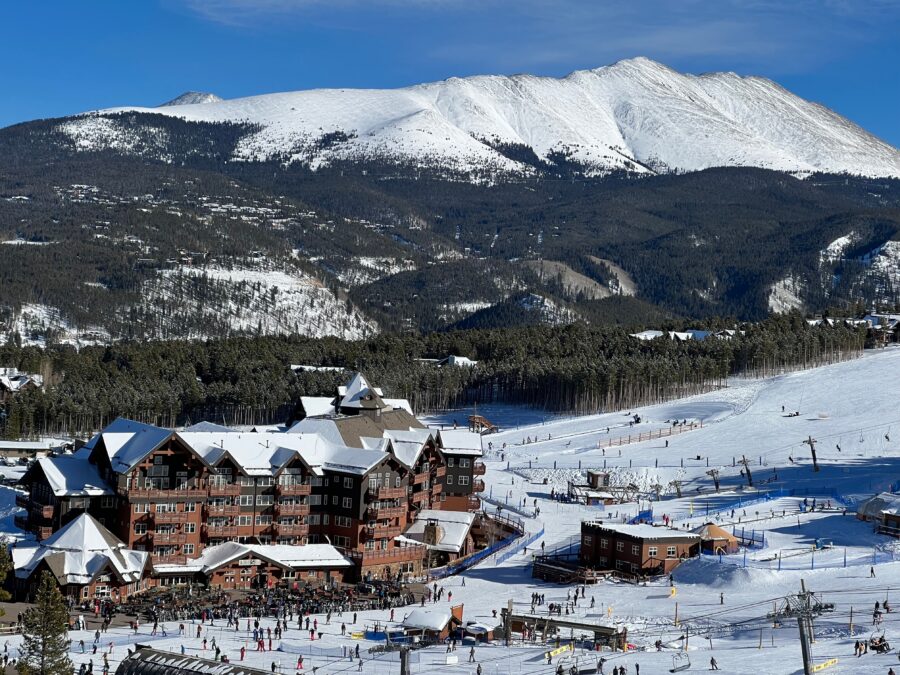
Breckenridge shines when it comes to accommodation options. The resort town offers everything from luxury hotels and condos to budget-friendly options within walking distance of the lifts. Many lodgings provide ski-in/ski-out access, making it convenient for guests to maximize their time on the slopes.
In contrast, Loveland doesn’t offer any on-site accommodations. According to search results, there aren’t even hotels within several miles of the ski area. This makes Loveland better for day trips rather than extended stays. Visitors typically stay in nearby towns like Georgetown or Idaho Springs, or commute from Denver.
This difference in lodging options reflects each resort’s core identity—Breckenridge is a full-service destination, and Loveland is a more locally focused ski area.
Dining Experiences
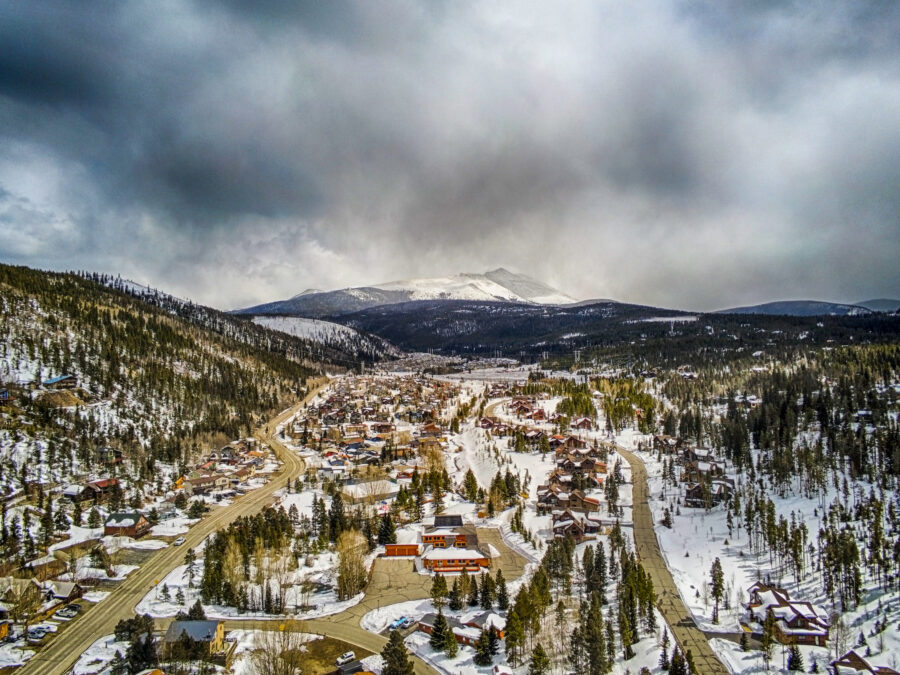
Breckenridge boasts a diverse culinary scene both on and off the mountain. On-slope dining includes everything from casual cafeterias to sit-down restaurants with panoramic views. The town has over 100 restaurants ranging from quick bites to fine dining establishments serving international cuisine.
Loveland offers more limited dining options. Its base lodges provide basic cafeteria-style food—burgers, soups, and hot drinks. The Loveland Basin and Loveland Valley have cafeterias with simple, hearty mountain fare at reasonable prices.
What Loveland lacks in variety, it makes up for in value. Meals tend to be more affordable than at larger resorts, making it easier on families and budget-conscious skiers.
Apres-Ski and Nightlife
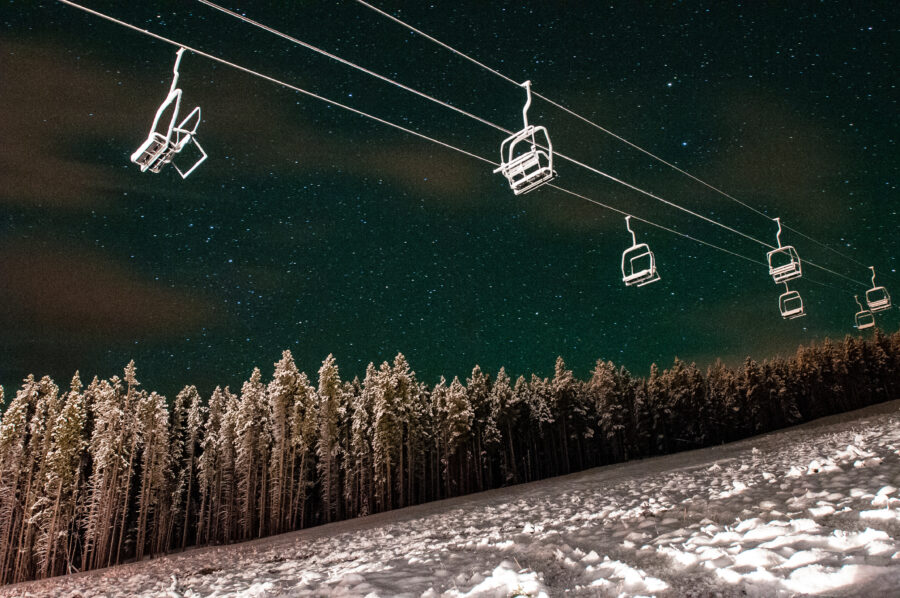
Breckenridge truly excels in this category with its lively downtown area. After the slopes close, visitors can enjoy dozens of bars, brewpubs, and lounges. Live music venues and nightclubs keep the energy going well into the night. The town also hosts events throughout the ski season, from beer festivals to concerts.
Loveland’s après-ski scene is much more subdued. There’s a small bar at the base where locals and visitors gather for a beer after skiing, but options are limited. The vibe is casual and friendly, focusing on relaxation rather than partying.
For those seeking nightlife, Loveland visitors typically head to nearby towns or back to Denver. This quieter atmosphere appeals to skiers who prefer to focus on the sport itself rather than the social scene.
Lift Systems and Queue Times
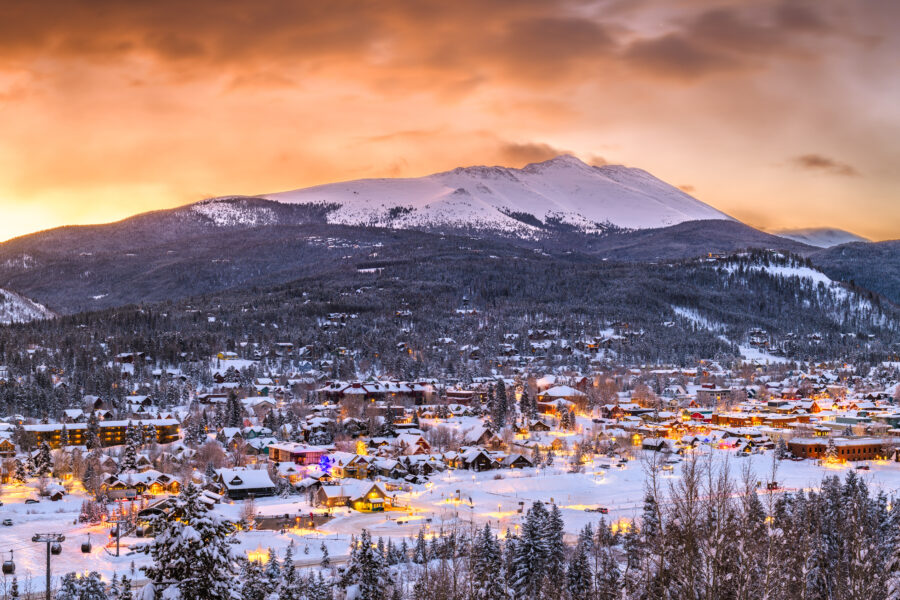
Breckenridge and Loveland offer different lift experiences that can make or break your ski day. Understanding how each resort manages crowds and lift access will help you choose the best skiing style and budget option.
Lift Ticket Options
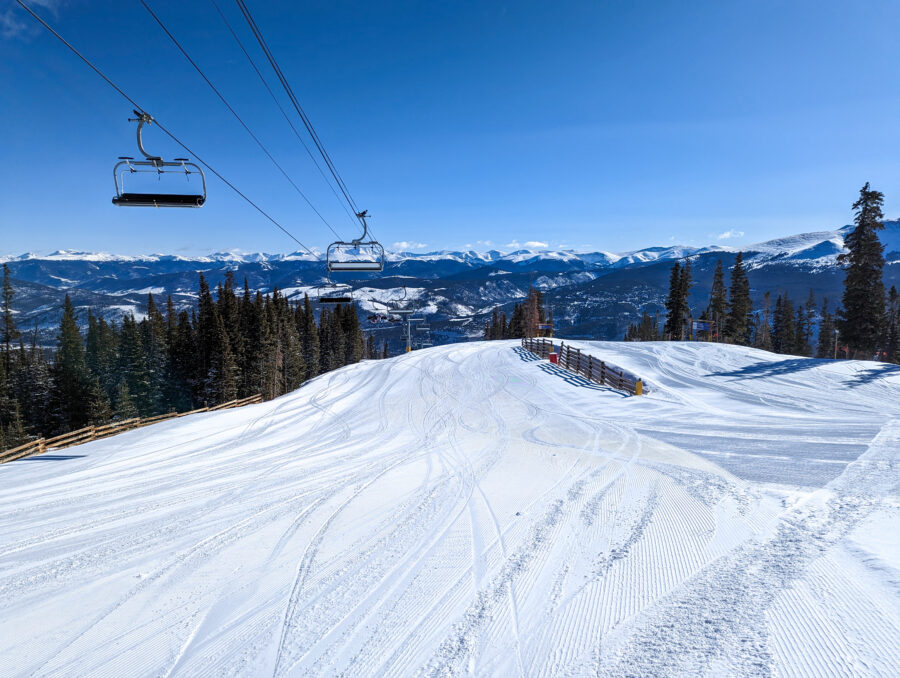
Breckenridge’s lift tickets are notably pricier than Loveland’s, reflecting its status as a premium resort. A single-day adult lift ticket at Breck can run $150-200 during peak season, while Loveland offers more budget-friendly rates around $89-99.
Breck requires advanced online purchasing through the Epic website or app, which can help you save a bit compared to window rates. They also offer multi-day discounts, which are worth considering if you plan a more extended trip.
Loveland, being independently owned, offers more flexible ticket options. You can buy directly at the window without reservation, and they have some unique deals like their 4-Pak, which gives you four transferable tickets at a significant discount. Both resorts offer reduced rates for children, seniors, and military personnel, but Loveland’s discounts tend to be more generous.
Lift Queue Management

Breckenridge operates an extensive network of 34 lifts, including high-speed quads and a gondola, but experiences much heavier crowds. The resort has implemented an interactive wait time tracking system (as mentioned in the “Holy Queue” website) that shows hourly lift-line wait times for each chairlift.
Peak times at Breck (holidays and weekends) can see wait times of 30+ minutes at popular lifts. Their recently completed lift upgrade project has improved circulation, but bottlenecks still occur.
With its 10 lifts, Loveland might seem limited in comparison, but the lower visitor numbers often result in much shorter lines. For this reason, many locals prefer Loveland specifically – it’s not uncommon to ski right onto a lift even on moderately busy days.
Both resorts have dedicated learning areas with their lifts for beginners, but Loveland’s tend to be less crowded.
Season Pass Deals
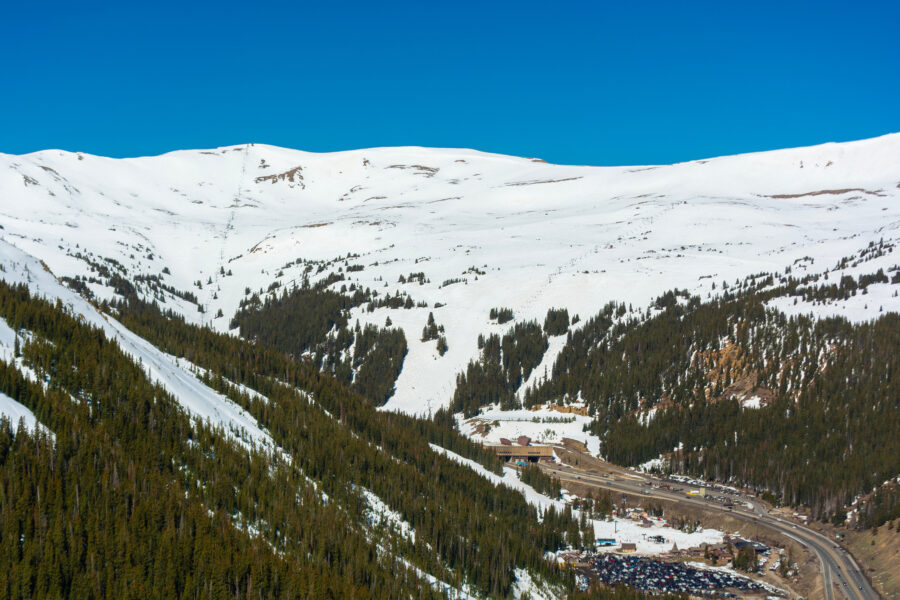
Breckenridge operates under the Epic Pass system, which offers tremendous value if you plan to ski multiple days or at various Vail-owned resorts. The full Epic Pass (around $900-1,100) gives unlimited access to Breck plus numerous other destinations worldwide.
For more budget-conscious skiers, Epic offers limited-day passes and local options with some blackout dates. These typically pay for themselves after 4-6 ski days compared to daily tickets.
Loveland’s season passes are significantly more affordable (around $500-600) and include bonus days at partner resorts. A unique perk is that Loveland pass holders receive three free days at over 30 partner resorts nationwide.
Both resorts offer early bird pricing, saving 20-30% when purchased in spring or early fall. Loveland’s passes have fewer restrictions and blackout dates than Epic’s lower-tier options.
Snow Quality and Weather Conditions

Breckenridge and Loveland offer distinct snow experiences due to their unique locations in Colorado’s mountains. Their positions relative to the Continental Divide significantly affect snowfall patterns and quality throughout the ski season.
Average Snowfall
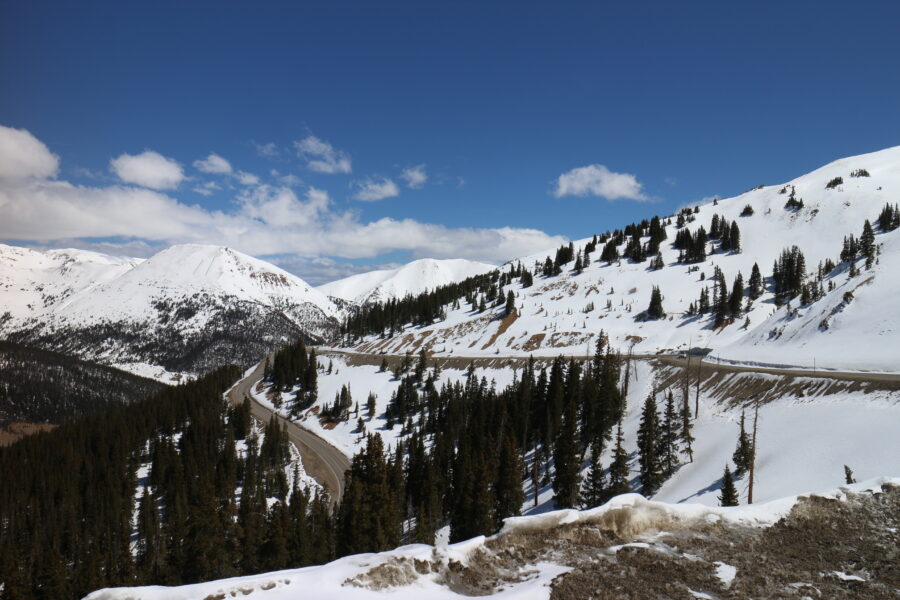
Loveland typically receives about 422 inches of snow annually, while Breckenridge averages around 300 inches annually. This difference is mainly due to Loveland’s strategic position near the Continental Divide, which helps it catch storms from multiple directions.
Breckenridge’s current season shows impressive numbers with a 62-inch base depth and a season total of 257 inches so far. The snowpack levels across Colorado are currently at 63% of normal, which affects both resorts.
Due to its higher elevation, Loveland often gets powder earlier in the season. Its snow tends to be lighter and drier, perfect for powder enthusiasts. Most locals know that Loveland sometimes gets dumped on while nearby areas receive much less.
Peak Snow Months
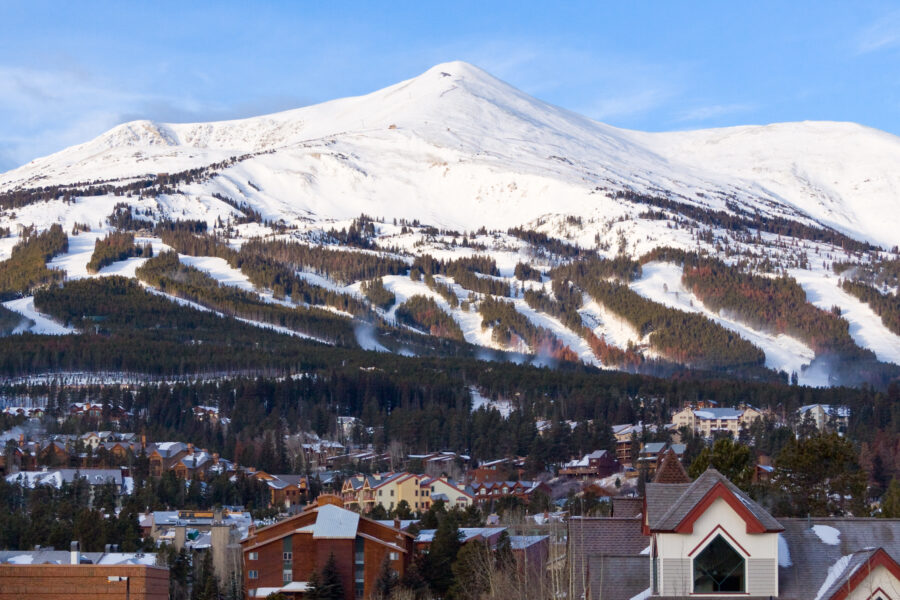
January and February typically deliver the most consistent snowfall for both resorts. March is often considered Colorado’s snowiest month, with heavy, wet snow that builds an excellent spring base.
Breckenridge maintains good snow conditions longer into spring due to its north-facing slopes, which better preserve snow. Their higher alpine terrain stays skiable well into April most years.
Loveland’s peak season can be more unpredictable but intense. When storms hit, they can drop significant amounts in short periods. Early-season storms in November and December often favor Loveland, making it a good choice for eager skiers looking to start their season early.
Microclimates at Each Resort
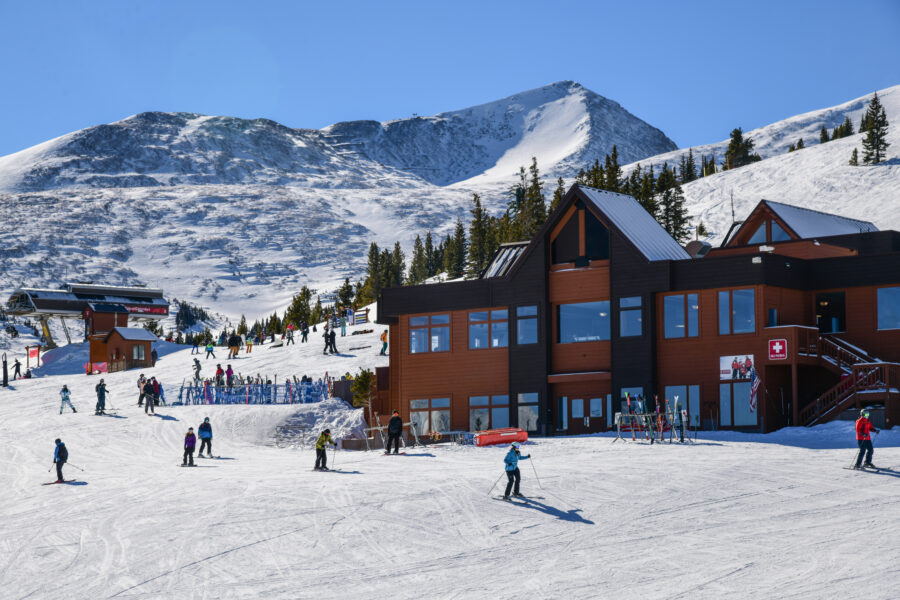
Breckenridge’s five peaks create varied microclimates across its expansive terrain. The upper bowls often hold powder stashes days after storms, while lower mountain areas can experience different conditions.
At Breckenridge, wind patterns deposit snow in predictable pockets that experienced skiers know to find. The T-Bar and Imperial areas often collect deep powder fields.
Loveland has a reputation for being windier and colder. One Reddit user called it a “terrible, cold, windy, small hill,” though not everyone shares this extreme view. The wind at Loveland can be both a blessing and a curse, sometimes scouring snow from exposed areas while creating deep drifts in sheltered spots.
Loveland’s position straddling the Continental Divide creates interesting weather patterns. The east side often has different conditions from the west, giving skiers options depending on the day’s weather.
See Related: Breckenridge vs Aspen: Key Differences to Know Before Booking Your Colorado Ski Getaway
Local Attractions and Activities
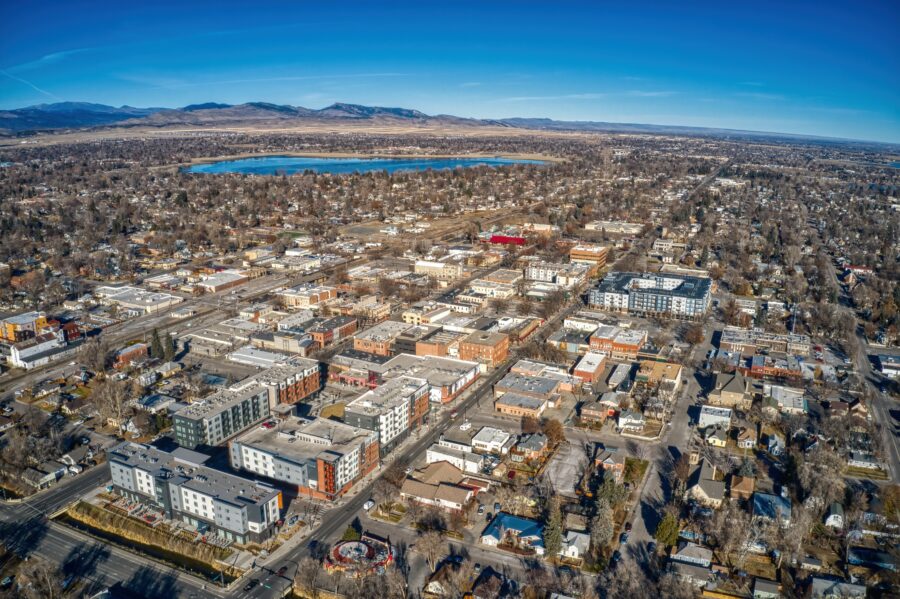
Both Breckenridge and Loveland offer plenty to do beyond skiing, with each area providing unique experiences for visitors. The surrounding towns, cultural events, and outdoor adventures make these destinations worth visiting year-round.
Nearby Towns and Shopping

Frisco sits just 15 minutes from Breckenridge and offers a charming main street with local shops and restaurants. Many travelers find it less crowded than Breckenridge but equally picturesque.
Dillon, located near Loveland Ski Area, features the Dillon Reservoir, which offers summer boating and fishing. The town also hosts a popular farmers’ market during the summer, where visitors can find local produce and crafts.
Keystone is another nearby option with its River Run Village shopping area. Here, visitors can find everything from outdoor gear to unique souvenirs.
For those willing to drive a bit farther, Vail Village provides upscale shopping with designer boutiques and art galleries. About an hour from both ski areas, Beaver Creek offers a similar luxury shopping experience with its pedestrian-friendly village.
Cultural and Outdoor Events
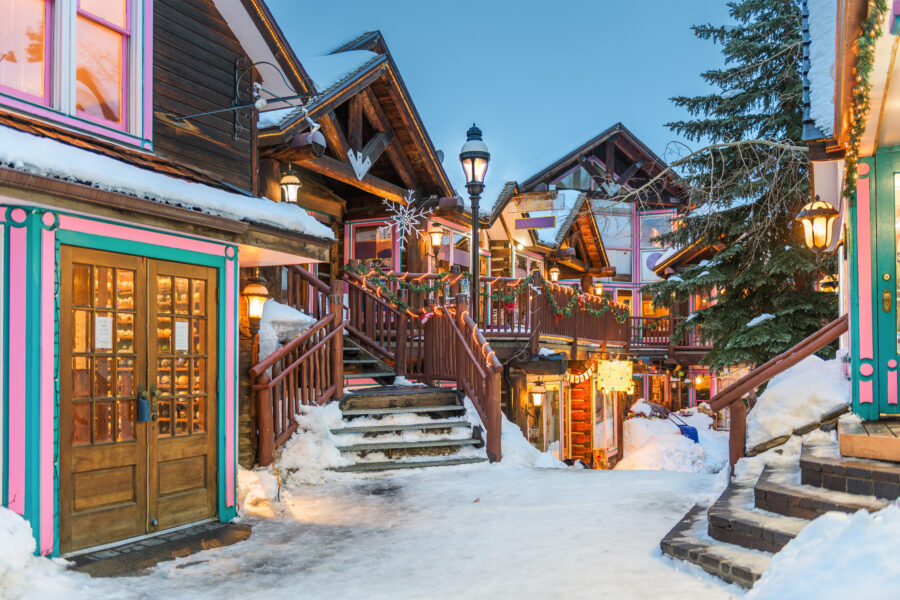
Breckenridge hosts the International Snow Sculpture Championships each January, drawing artists worldwide. The intricate ice sculptures remain on display for several days after completion, weather permitting.
The Breckenridge Music Festival brings classical performances to the mountains during summer. Outdoor concerts often take place against stunning mountain backdrops.
The Loveland area celebrates Oktoberfest events in nearby towns like Georgetown. These festivals feature German food, music, and plenty of craft beer sampling opportunities.
Both areas host weekly farmers’ markets during summer where visitors can sample local foods and crafts. Breckenridge’s Sunday market is particularly popular for its various vendors and live music. The 4th of July celebrations in mountain towns are spectacular, with parades, fireworks, and community events that give visitors a taste of mountain culture.
Non-Skiing Adventures
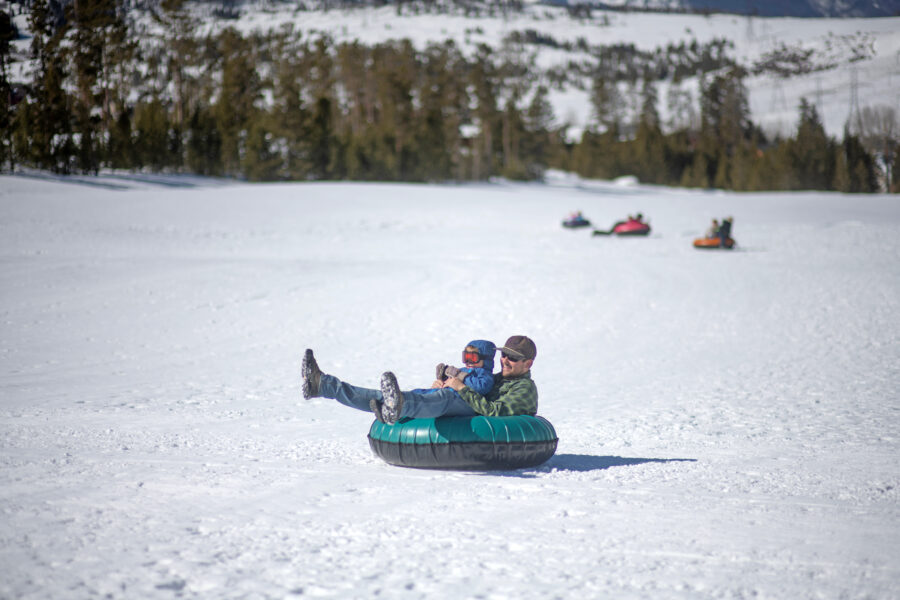
Snow tubing at Keystone or Frisco Adventure Park provides thrills for all ages. The maintained lanes and lift service make these spots perfect for families looking for winter fun without skiing.
Snowshoeing trails around Loveland Pass offer spectacular views with less technical skill required than skiing. Guided tours are available for beginners learning about local wildlife and ecology.
Dog sledding adventures can be booked near both ski areas. These trips typically last 1-2 hours, including meeting the sled dogs and learning about their training.
Fat tire biking has grown in popularity, with groomed trails available around Breckenridge and Loveland. Rental shops provide all necessary equipment and can suggest routes based on experience.
Visitors can try ice fishing on Dillon Reservoir for a unique winter adventure. Local guides provide equipment and expertise to help even novices catch trout through the ice.
Comparison of Costs

The cost difference can be significant when choosing between Breckenridge and Loveland for your ski trip. Breckenridge tends to be much more expensive across all categories, while Loveland offers a more budget-friendly experience without sacrificing quality.
Lift Tickets and Ski Passes
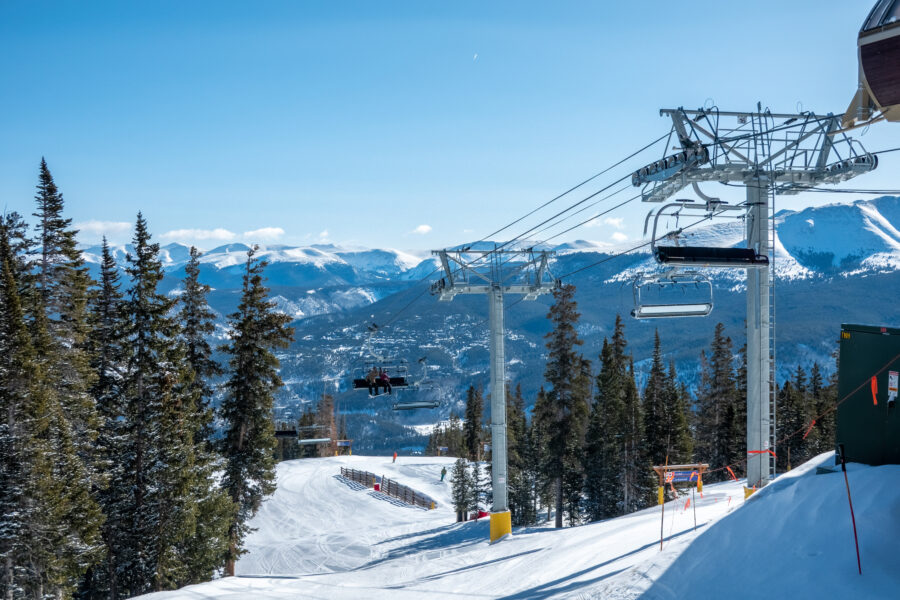
Lift tickets at Breckenridge are considerably pricier than at Loveland. A single-day adult lift ticket at Breckenridge can cost between $150-$209, depending on the season and how far in advance you purchase. Holiday periods see the highest prices.
Loveland, on the other hand, offers much more affordable rates. Single-day tickets typically range from $89 to $99. They also provide 4-packs and other multi-day discounts that bring the per-day cost down even further.
Season passes show a similar pattern. While both resorts are included in various pass options, dedicated Loveland season passes cost significantly less than Breckenridge’s Epic Pass options.
Parking is another cost consideration. Breckenridge charges for parking at most lots, while Loveland offers free parking close to the lifts – a hidden cost savings that adds up over multiple days.
Accommodation Pricing
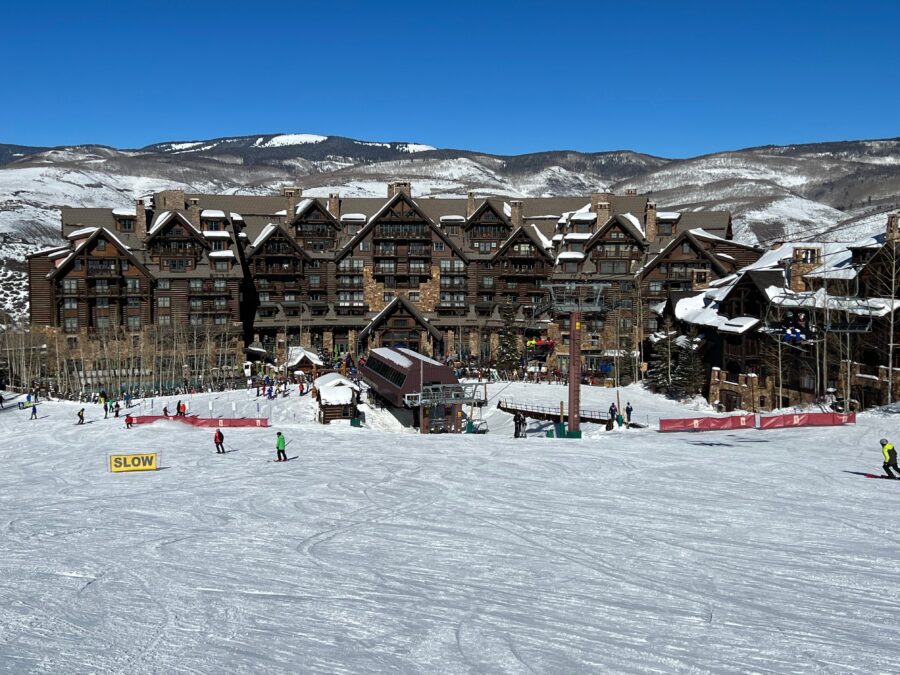
The housing cost difference between these two destinations is dramatic. According to comparison data, Breckenridge accommodations are 121.2% more expensive than those in Loveland.
In Breckenridge, expect to pay:
- Budget hotels: $200-300/night
- Mid-range condos: $300-500/night
- Luxury rentals: $500-1,000+/night
Loveland area accommodations (typically in nearby Georgetown, Idaho Springs, or Silverton) cost significantly less:
- Budget hotels: $100-150/night
- Mid-range accommodations: $150-250/night
- Larger rentals: $250-400/night
The price gap widens further during peak season (December-March) and holidays, when the Breckenridge premium can increase by 30-50%. Many visitors save by staying in nearby towns and driving to either resort.
Rental Equipment Rates
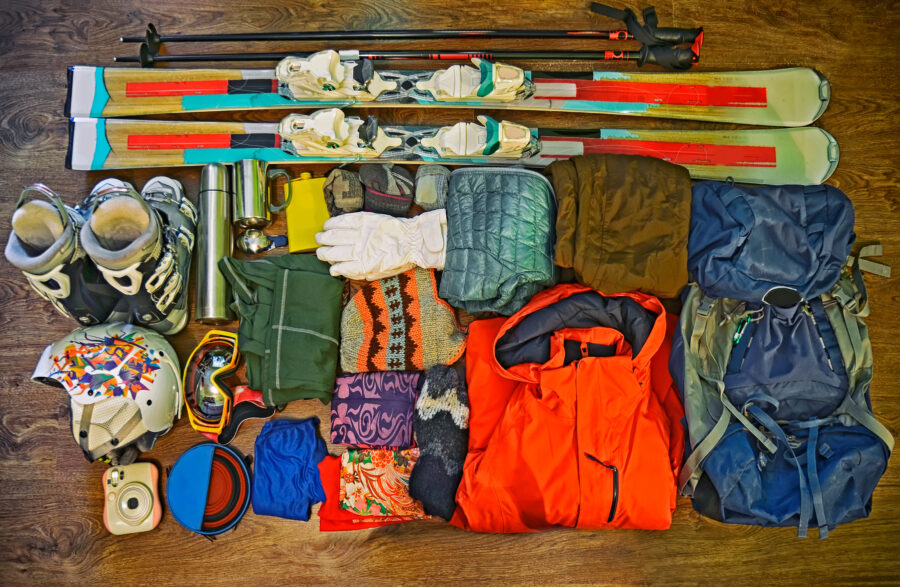
Equipment rental costs follow the same pattern, with Breckenridge charging premium prices while Loveland offers more affordable options.
Breckenridge Equipment Rental (Daily Rates)
- Basic ski package: $60-80
- Performance ski package: $80-100
- Demo ski package: $100-120
- Snowboard package: $65-85
Loveland Equipment Rental (Daily Rates)
- Basic ski package: $35-45
- Performance ski package: $45-60
- Demo ski package: $70-85
- Snowboard package: $40-55
Many visitors save by renting from shops in Denver or surrounding towns rather than at the resorts. Multi-day rentals typically offer additional discounts at both locations, but Loveland’s base prices make it the clear winner for budget-conscious skiers and riders.
Reviews and Testimonials
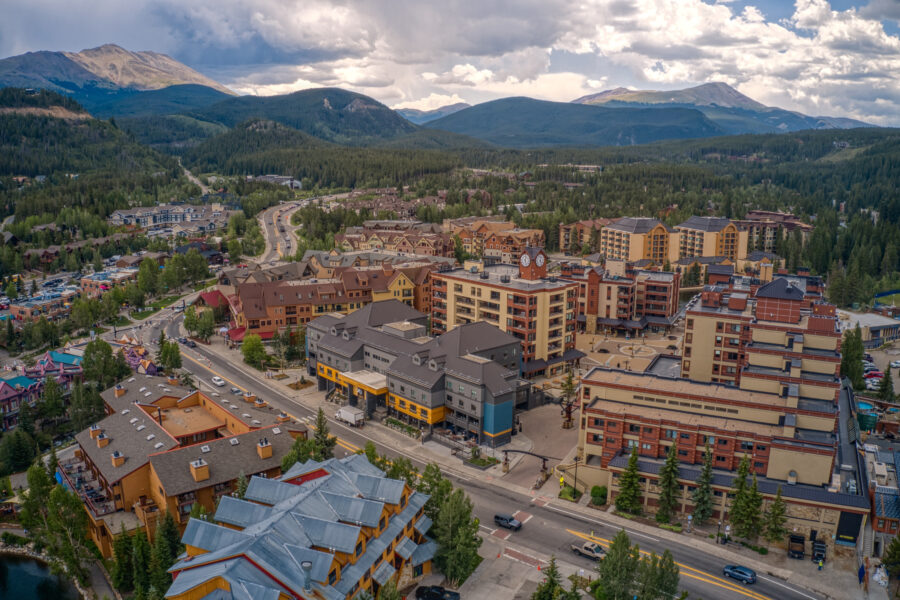
Honest visitor feedback reveals the distinct experiences at both Breckenridge and Loveland ski areas. People praise and critique different aspects of each resort based on their priorities and skill levels.
Professional Ratings
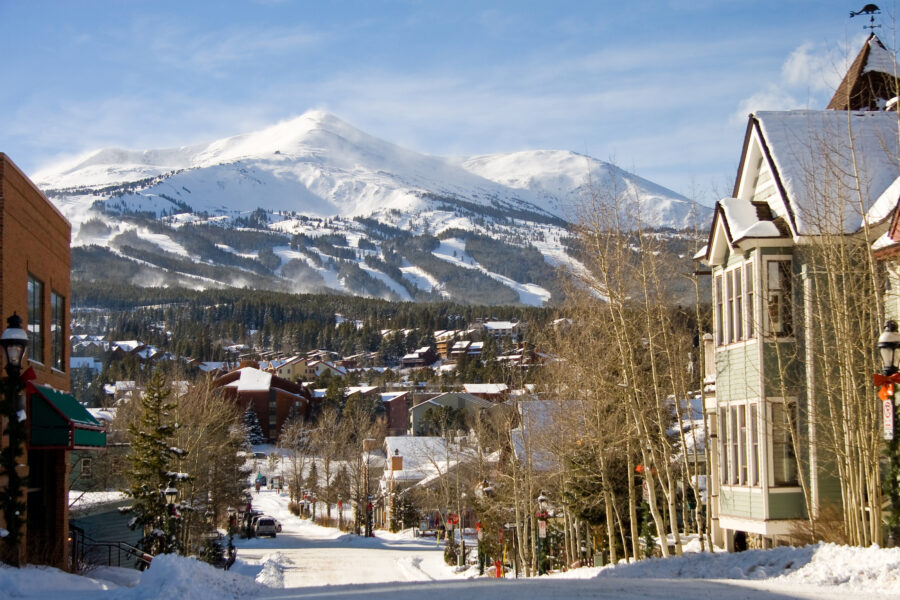
Ski industry publications consistently rank both resorts favorably, though for different reasons. Loveland is often described as a “unique, fun resort” that some reviewers find “more appealing than bigger nearby resorts like Keystone and Breckenridge.” This underdog status has earned Loveland respect among skiing purists.
Breckenridge typically scores higher in amenities and overall resort experience in professional reviews. Its extensive terrain and well-developed village area contribute to its higher ratings in comprehensive ski resort rankings.
Professional reviewers often note Loveland’s value proposition – shorter lift lines and lower costs than Breckenridge’s more polished but crowded experience.
Visitor Experiences
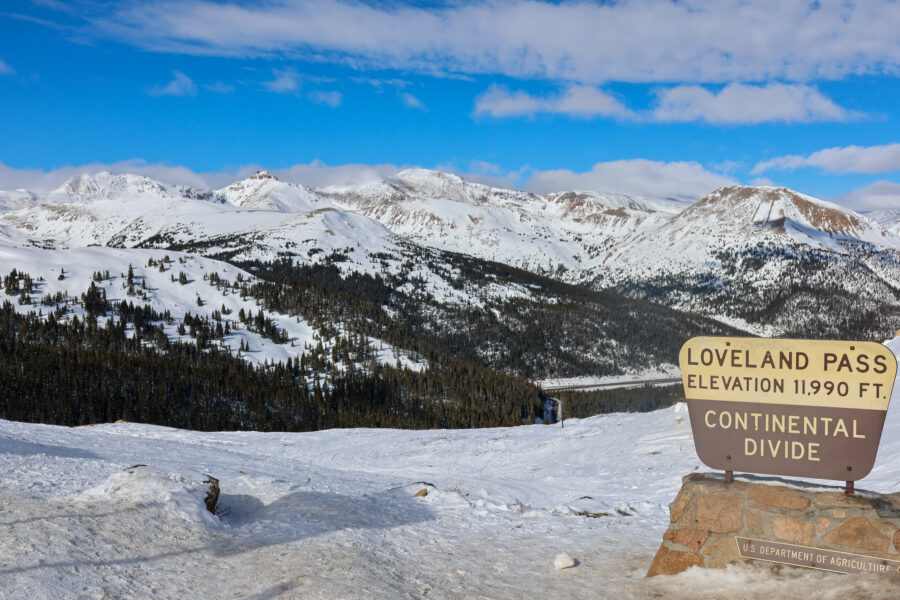
Real visitors frequently mention Loveland’s shorter lift lines and friendly staff. One recent review noted, “Lift lines were short, staff was very friendly” – a common theme among Loveland visitors.
Breckenridge reviews often highlight the vibrant town atmosphere and extensive terrain options. However, some visitors mention crowds as a downside during peak periods.
Loveland receives praise for its authenticity but criticism for its harsh weather conditions. As one reviewer said, “Loveland can be great—good terrain, no crowds, but boy can it get cold and windy.”
Housing costs also impact visitor experiences. Data shows “Loveland housing costs are 54.8% less expensive than Breckenridge,” making extended stays more affordable.
Family-Friendliness
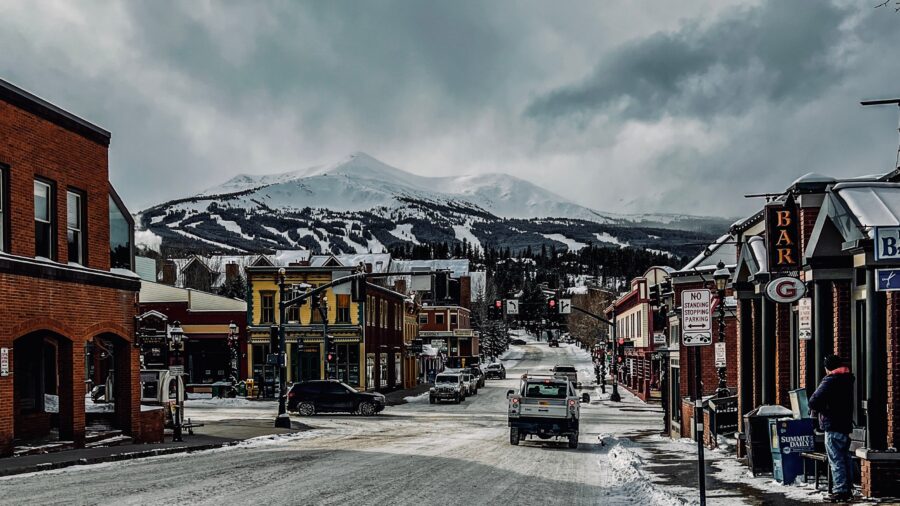
Families report mixed experiences at both resorts. Breckenridge offers more structured family programs and amenities, including dedicated learning areas and family-focused activities on and off the slopes.
Loveland’s appeal to families centers on affordability and less intimidating crowds. Parents appreciate the more relaxed atmosphere and shorter lift lines, which means more actual skiing time for kids with limited patience.
Free parking at Loveland is frequently mentioned as a family-friendly perk. When traveling with kids and all their gear, the convenience of accessible parking significantly improves the overall experience.
Both resorts offer quality ski schools, though Breckenridge’s tends to be more extensive and expensive, and sometimes requires booking during peak periods.
Expert Skier Opinions
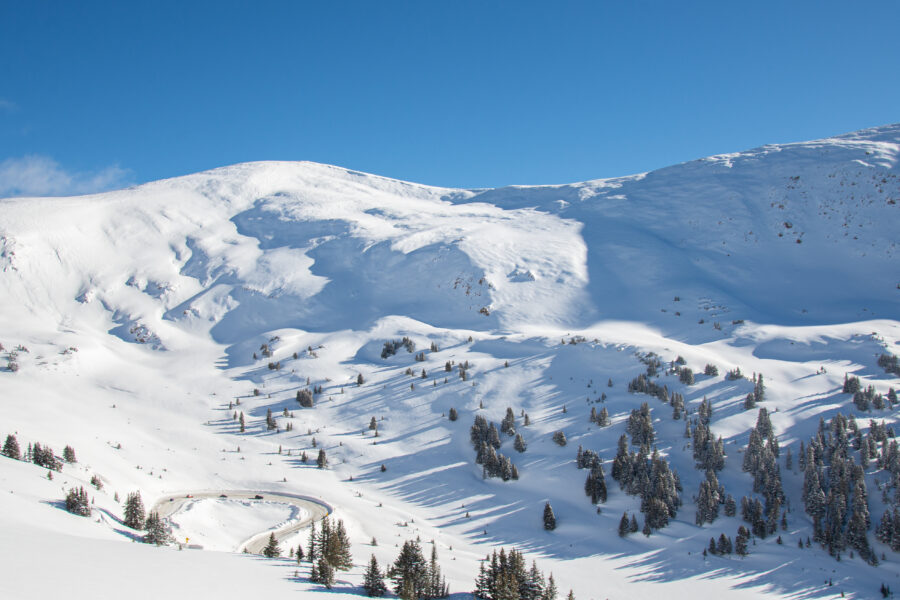
Advanced skiers often develop strong preferences between these resorts. Loveland earns praise for its “great terrain” and “sparse crowds” from serious skiers who prioritize maximizing their time on challenging runs.
The search results highlight that Loveland is considered “a local’s favorite,” indicating its popularity among experienced Colorado skiers who know the area well. This insider approval carries weight with expert skiers researching destinations.
Breckenridge’s extensive high-alpine terrain receives acclaim from experts seeking diverse, challenging options. However, some experienced skiers note that the best expert terrain can become tracked out quickly due to higher visitor numbers.
Both resorts offer unique expert experiences: Breckenridge with its above-treeline bowls and Loveland with its less-crowded steep sections and snow that stays fresh longer after storms.
See Related: Breckenridge vs Copper Mountain: Key Differences for Your Colorado Ski Adventure
Environmental Responsibility
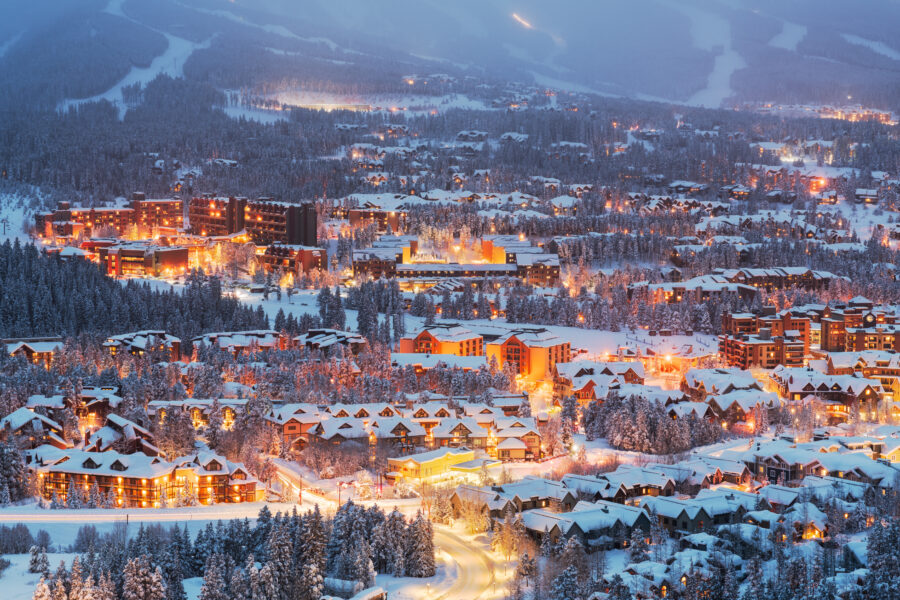
Breckenridge and Loveland ski resorts face environmental challenges as climate change threatens Colorado’s ski season. These resorts have responded with various sustainability initiatives to preserve the natural beauty that draws visitors to the slopes.
Sustainable Practices
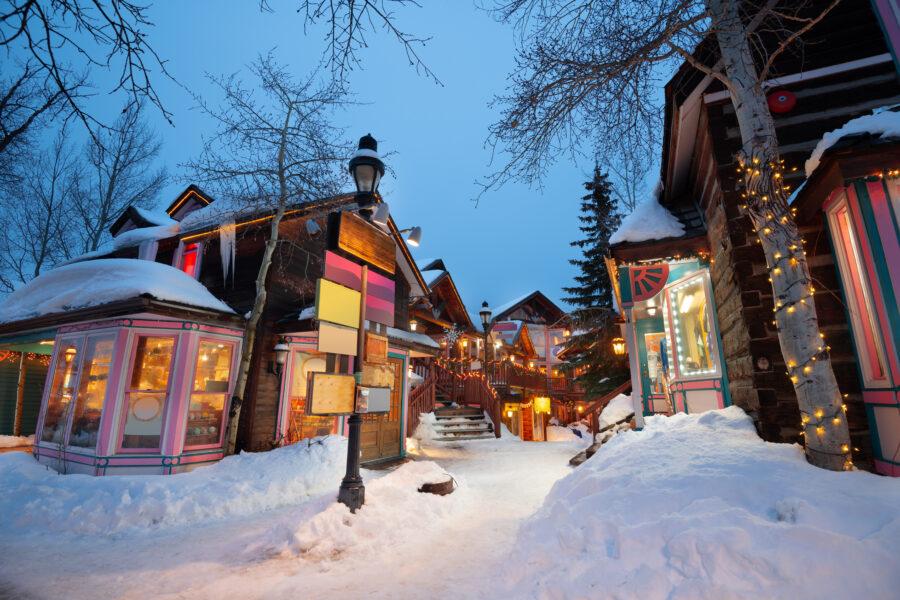
Breckenridge has made notable strides in reducing its environmental footprint. The resort uses energy-efficient snowmaking equipment that requires less water and electricity. It has also invested in renewable energy sources, with parts of the resort powered by wind and solar energy.
Loveland takes a more grassroots approach to sustainability. Their focus on natural snowfall (when possible) reduces energy consumption compared to resorts that rely heavily on artificial snow. The resort has also implemented water conservation practices throughout its facilities.
Both resorts face the sobering reality mentioned in the search results – Colorado ski areas could see their seasons reduced by 10-50% by 2050, according to EPA estimates. This has motivated them to adopt more sustainable practices like reducing waste and improving energy efficiency.
Eco-Friendly Initiatives

Breckenridge’s “Epic Promise” program commits to zero net emissions and zero waste to landfill by 2030. The resort has installed water bottle refill stations to reduce plastic waste and offers free public transportation to decrease vehicle emissions.
Loveland partners with local conservation groups to protect the surrounding ecosystem. The resort’s smaller size gives it an advantage in some ways – less development means less habitat disruption in the surrounding alpine environment.
Both resorts have introduced recycling and composting programs in their lodges and restaurants. They’ve also begun using more eco-friendly cleaning products and reducing single-use plastics in their facilities.
Some runs at both resorts remain ungroomed when possible, which saves fuel and preserves natural snow conditions longer.
Community Involvement
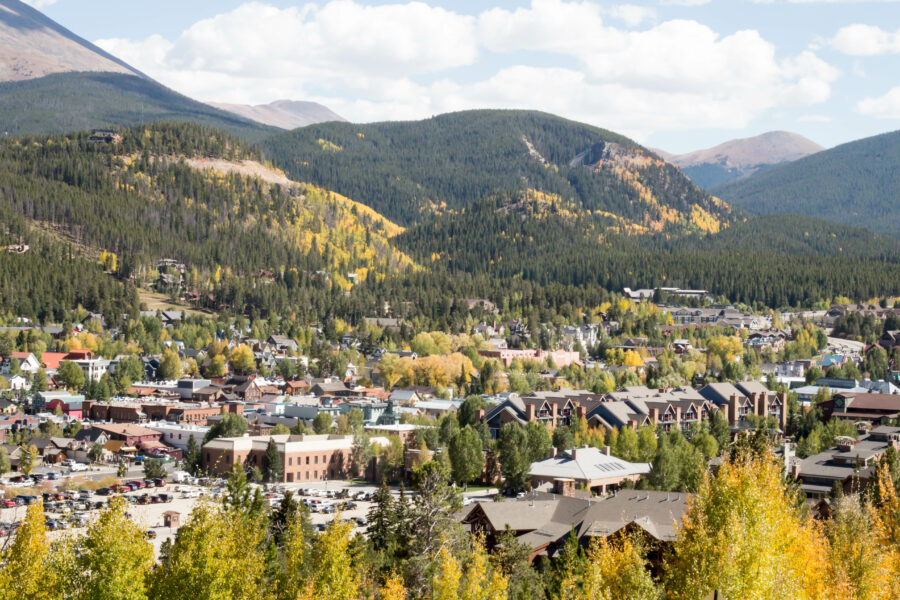
Breckenridge hosts annual environmental awareness events where visitors can learn about conservation efforts. The resort also organizes volunteer days for trail maintenance and forest cleanup. Its community partnerships extend to local schools, where it sponsors environmental education programs.
As noted in the search results, Loveland actively participates in local and regional conservation efforts. The City of Loveland supports environmental sustainability initiatives to preserve natural resources. The resort regularly consults with ecological experts to minimize its impact on the delicate alpine ecosystem.
Both resorts encourage visitors to participate in their sustainability efforts. Educational signs throughout the properties inform guests about local wildlife, ecosystem sensitivity, and how they can help preserve these beautiful mountain environments for future generations of skiers.
Frequently Asked Questions
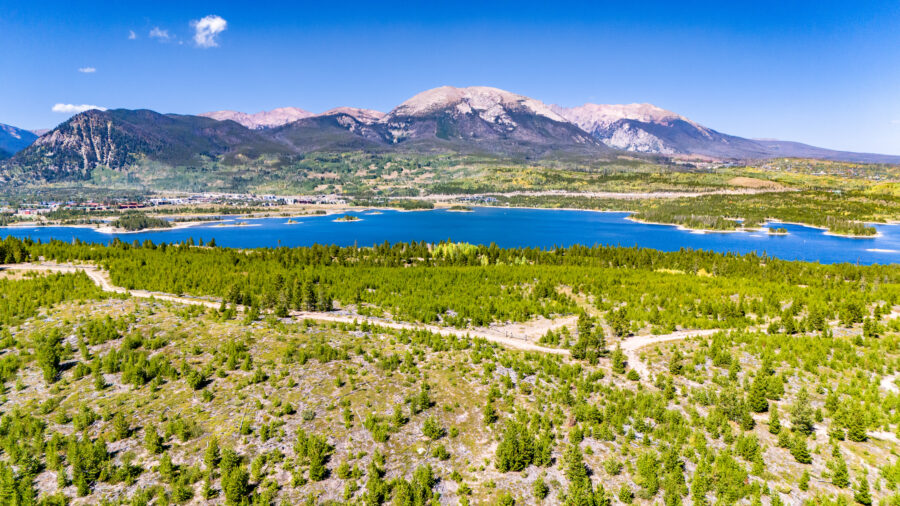
Choosing between Breckenridge and Loveland for your ski vacation involves weighing factors like terrain, crowds, costs, and amenities. Both resorts offer unique experiences that cater to different preferences and skill levels.
What are the advantages of choosing Breckenridge over Loveland for skiing?
Breckenridge offers a more expansive ski resort experience with multiple peaks and a wider variety of terrain. The mountain is easier to navigate than other large resorts like Vail, making it more beginner-friendly.
Breck (as locals call it) has a charming historic downtown with plenty of restaurants, shops, and après-ski options. This creates a complete vacation experience beyond just the slopes.
The resort also features more advanced infrastructure, including high-speed lifts and better on-mountain facilities. Breckenridge delivers a more comprehensive package for visitors seeking a blend of skiing and resort amenities.
How does Loveland’s ski experience compare to that of Breckenridge in terms of snow quality and terrain?
Loveland’s high elevation and position along the Continental Divide often ensure excellent snow. The resort typically gets powder earlier in the season and maintains good conditions longer.
The terrain at Loveland is more varied than many first-time visitors expect, with options for all skill levels. Beginners will find gentle slopes perfect for learning, while advanced skiers can enjoy challenging runs.
One notable difference is crowds – Loveland typically has significantly shorter lift lines and less skier slope traffic than Breckenridge. This means more actual skiing time and less waiting.
Are any distinct features that set Loveland Ski Area apart from Breckenridge for winter sports enthusiasts?
Loveland has a distinct local vibe that many skiers cherish. It’s less commercialized and offers a more authentic Colorado skiing experience without the resort-town atmosphere.
Loveland’s affordability is a significant advantage. Lift tickets are substantially cheaper than in Breckenridge, making it an excellent choice for budget-conscious skiers.
The ridge terrain at Loveland provides phenomenal above-treeline skiing that rivals anything in the region. For powder hounds, Loveland’s less-tracked snow can be a hidden treasure on storm days.
Can you highlight the differences in the family-friendly amenities that Breckenridge and Loveland Ski Area offer?
Breckenridge excels with comprehensive family amenities, including extensive ski schools, daycare options, and specialized children’s terrain. The resort invests heavily in programming for young skiers.
Loveland offers a more laid-back family experience with less crowded learning areas. Their ski school is well-regarded and more affordable than Breckenridge’s programs.
For après-ski family activities, Breckenridge has the clear advantage with its charming town offering ice skating, sleigh rides, and family-friendly restaurants. Loveland focuses primarily on the skiing experience itself.
Regarding accessibility and travel convenience, how do Breckenridge and Loveland compare for a ski vacation?
Loveland wins on accessibility from Denver, about 53 miles from the city, with no mountain passes. This shorter drive makes it perfect for day trips or avoiding mountain traffic.
Breckenridge requires traveling further from Denver (about 80 miles) and often involves dealing with I-70 weekend traffic. However, it offers more lodging options directly at the mountain’s base.
For out-of-state visitors, Breckenridge provides better transportation options, including shuttle services from Denver International Airport and public transportation within town. Loveland generally requires renting a car.
What are the cost differences for a day on the slopes at Breckenridge versus Loveland, including lift tickets and rentals?
Loveland offers significantly lower prices overall. Daily lift tickets at Loveland can be half the cost of Breckenridge’s peak-season rates, which makes a huge difference for families or longer stays.
Equipment rentals follow the same pattern, with Loveland’s rental shop charging more reasonable rates. Breckenridge has more rental options but at premium prices.
Food and beverages on the mountain show the largest price gap. A lunch at Loveland might cost $15-20, while similar meals at Breckenridge can easily exceed $25-30. These daily expenses add up quickly during a ski vacation.


